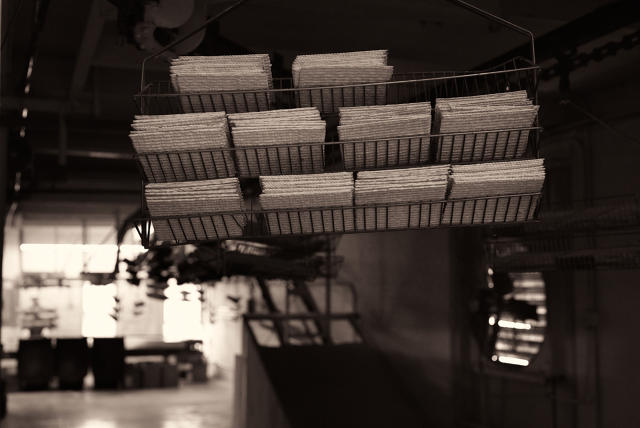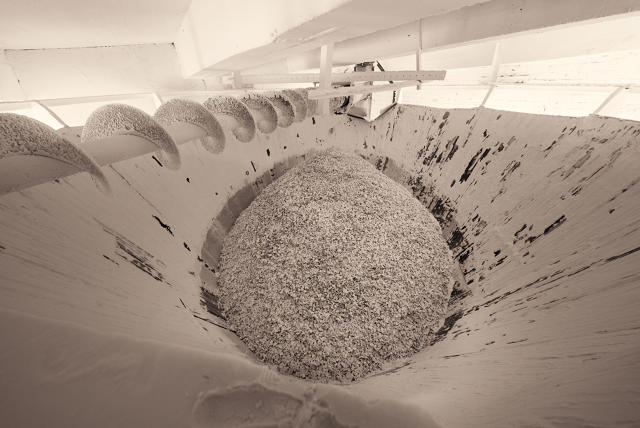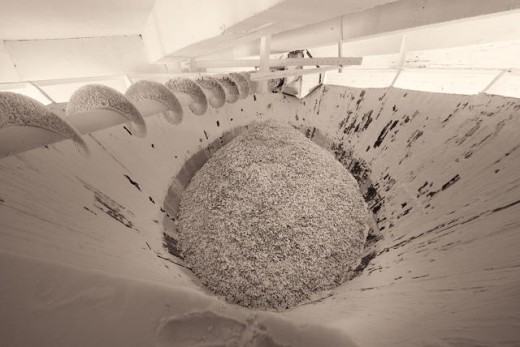The Last Days Of Streit’s, New York’s Jewish Willy Wonka Factory
Photographer Joseph O. Holmes photographs the last days of the 90-year-old Manhattan matzo factory.
Located on Rivington Street on Manhattan’s Lower East Side, Streit’s Matzo Factory has been pumping out as much as 900 pounds of matzo an hour to feed New York’s Jewish community for almost a century. After 90 years, though, Streit’s is closing-up shop, shutting down its Manhattan factory and moving off the island, probably to New Jersey. It’s just another working-class landmark, disappearing beneath Manhattan’s insane push toward extreme gentrification.
A new series by photographer Joseph O. Holmes documents Streit’s last days. Holmes first came to New York in 1984, a time in which, he says, Manhattan was still “filled with old cramped neighborhoods and kooky factories and workspaces.” During his years in the city, Holmes says, he grew especially fond of Streit’s, where you could see, right through the first-floor window, the matzo being cooked, and where, if you were lucky, a yarmulke-wearing Streit’s baker might break off a still-warm piece of matzo and hand it to you through the window with a wink.

When Holmes found out that Streit’s was closing down its loopy factory to build something saner and more cost-efficient in New Jersey, he approached the managers to take some photos, documenting its last days. In many ways, Holmes was perfectly suited to the task. His last series was The Booth, where he documented the last days of the manned projection booth as it was slowly but surely killed by digital.
Although the mood of Holmes’s photos is somber—a reflection of the photographer’s own feelings about the factory leaving Manhattan—Streit’s Matzo Factory is bright, sunny, and slightly surreal—kind of like a Jewish Willy Wonka’s. “It’s a crazy Rube Goldberg machine in there,” laughs Holmes. Spread across four buildings and six floors, a maze of pneumatic tubes zip around everywhere, while strange conveyor belts carry flour and matzo meal disappear through holes in the ceiling, or the floor. Because of this unusual layout, Holmes spent five weeks shooting his series. “I was still discovering new things on my last day of shooting,” he remembers.

This unusual layout is a large part of the reason Streit’s is moving out of Manhattan. Along with its weird array of fantastic matzo-making machines—some of which are more than 80 years old, and which have been kept patched together with a “Frankenstein-like” array of parts, according to Holmes—the Streit’s factory, like Wonka’s, is simply not very efficient. Likewise, Streit’s two 75-foot ovens, which can bake 900 pounds of matzo an hour, aren’t burning as hot as they used to, and the factory is even missing obvious features like loading docks. By selling the four buildings the Streit’s factory is located in, Streit’s can afford to open a whole new, top-of-the-line matzo-making factory somewhere else, like New Jersey.
That’s good news for Streit’s, but bad news for Manhattan’s diversity (and charm). “There’s just so few places you can see factory workers and machines in Manhattan anymore,” Holmes complains. “That’s very sad to me. New York is becoming a less varied, and more homogenous environment. The diversity is going away. It used to be a melting pot. Now it’s an island of banks and residential high rises.” Streit’s may survive, Holmes says, but a part of New York will not, because this wonderful factory, its crazy armada of machines, and its unique, 90-year influence on Manhattan’s culture will be irrevocably lost.
You can see more of Holmes’s photography work here.
[All Photos: Joseph O. Holmes]
Fast Company , Read Full Story
(239)














